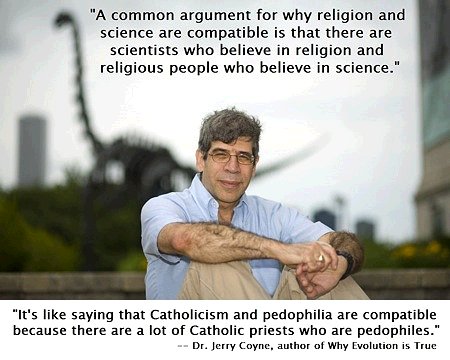Creation: Question Evolution Campaign — 3 of 15

A Sunday guest post by my brilliant husband, Gregg.
Every Sunday, my clever husband offers me a “day of rest” by taking over the homemaker duties here. His primary topic, the Biblical Truth of Creation vs. Darwinism, is a subject that has broad reaching scientific, social, and metaphysical implications and is gaining more and more attention in our modern culture. For believers and non-believers alike, the primary purpose is to present scientific, historical, logical, and/or sociological data in an empirical and defensible fashion, as much as possible written in layman’s terms, and in a format suitable for supplementing any homeschool curriculum whether you choose to believe the Biblical account — or secular guesses — about the origins of human life on earth.
How did mutations create information?
How could copying errors (mutations) create 3 billion letters of DNA instructions to change a microbe into a microbiologist?
It is nearly impossible to conceive of the raw amount of specific information stored in the DNA of any living thing. If you could record all the information for how to build proteins, cells, entire biological systems such as respiratory and circulatory, and organs, how to reproduce, how to follow instinctive patterns — and then incorporate those plans into a body type complete with instructions for maintenance and expansion (growth) and ensure that the information cannot be easily lost or overwritten as well as instructions for every molecular machine in the entire human body — that is DNA. The density and complexity of the information is not reduced between a fern to a flamingo or a man to a moth.

It isn’t like a cookbook that contains both a list of ingredients and instructions for their use. It is more like an entire 80 story library the size of a warehouse that contains ALL POSSIBLE information and instructions for running all of NASA. The library would have to cover all elements of the organization from HR and policies to floor plans for factories and blueprints for any tools required to manufacture and operate a fleet of space shuttles — and maintain them. That would be a good metaphor, except that the DNA for any living creature on planet earth actually contains far more data even than that.
Writing out the information in human DNA in standard sized books would mean you could fill a box the size of the grand canyon — twice. Conversely, if all information generated by the human race in the last 5000 years — from smoke signals and cave paintings to every single daily newspaper ever published on every continent to the entire internet — could be translated into the language of DNA, it would not fill a tablespoon. That is how efficient and how information rich DNA is.
Darwinists claim that mutations, or copying errors — essentially accidents — in the DNA code are the primary engine for growing living things from an amoeba into an aviator. Mutations rank equally with fossils and natural selection as the three most important aspects of biological evolution. Fossil evidence in the sedimentary rock strata is supposed to provide evidence that species evolution has occurred in the past, and natural selection and mutations are the only reasonable means (mechanisms or engines) by which this could possibly occur.
A genetic mutation is damage to a single DNA unit (a gene). Mutations can occur spontaneously or be induced. In general, mutations can potentially affect structure, function, or fitness of the individual or inheritance of abilities in offspring.
Some definitions, first. Normal body cells are called somatic cells. In eukaryotic cells, the nucleus of somatic cells will contain a diploid number of chromosomes. Gametic cells (gametes such as sperm and ova) contain half the diploid number of chromosomes, called the haploid number. In humans, the diploid number is 46 (found in such cells as muscles, bone, skin etc.) and the haploid number is 23 (found in gametic cells such as sperm and ova). On fertilization, two haploid cells (sperm + ovum) unite to form a zygote (an unborn baby) with the diploid number of 46 chromosomes.
One can put genes into two categories; somatic (body) and gametic (reproductive). If a mutation occurs in a somatic gene, it only affects the individual. If a mutation occurs to a gametic gene, it could possibly be passed on to descendants. Neither creates new, useful, tremendously specific, exceptionally accurate, highly complex information in DNA. They are, after all, errors and errors have largely deleterious effects.

In sexual reproduction, the odds are slim that mutations will be passed on to subsequent generations and the odds are just about one in four that the mutation could express if it is passed on. The overwhelming majority of mutations that occur in gametic genes that ARE passed on AND expressed are neutral — the remainder are either fully harmful or even lethal. Mutations are known for their destructive effects, including over 1,000 human diseases such as hemophilia. Absolutely no known mutations create any new useful information in genes.
This leads to the second question posed by the folks at Creation.Com in their Question Evolution Campaign: How could mutations—accidental copying mistakes (DNA ‘letters’ exchanged, deleted or added, genes duplicated, chromosome inversions, etc.)—create the huge volumes of information in the DNA of living things?
Seriously? Even given billions of years and only the most favorable possible conditions and outcomes at every turn, how could reproductive (gametic) gene errors create over 300 lines of letters of tremendously specific, exceptionally accurate, highly complex DNA coded information to change a microbe into a microbiologist?
About 3% of human DNA contains information for how to make proteins. The remaining 97% of human DNA (formerly thought by Darwinists to be “Junk DNA” and “vestigial” evidence of our evolutionary past) contains what is now known to be meta-information, or regulatory information which is mostly instructions for controlling the use and functions of the proteins. In a nearly perfect definition of irreducible complexity, both had to exist fully intact and all at once because — one without the other is utterly useless.
Even assuming information packed DNA somehow magically appeared fully provisioned complete with specificity and zero errors in the mythical primordial soup, how then can scrambling existing DNA information at random from generation to generation create a new biochemical pathway or nano-machines with many very specific components, to make ‘goo-to-you’ Darwinian evolution possible?
For example, How did a 32-component rotary motor like ATP synthase (which produces the energy currency, adenosine triphosphate, for all life on this planet), or robots like kinesin (a ‘postman’ delivering parcels inside living cells) originate?
To Coyne a Phrase

Allow me to introduce died in the wool Darwinist apologist and evolutionary biologist Dr Jerry Coyne of the University of Chicago. Dr. Coyne once famously stated, upon learning that the peppered moth photos were fraudulent, that finding out this “prize horse in our [Darwinists’] stable” had to be thrown out gave him the same feeling as when he found out that Santa Claus was not real.
Coyne says that believers in the Biblical account of creation are irrational. Coyne has a lot of rather thought provoking things to say about believers in the Biblical account of creation.
After trotting out the same old tired arguments (minus the peppered moth, of course) and examples of rapid human-induced biological changes (antibiotic resistance in bacteria, pesticide resistance in insects, changes in growth rate of fish from overfishing) to get people to “consent” to the bigger idea of microbes-to-mankind evolution, Coyne then asserts that anyone who doesn’t believe evolution is made possible on this basis is “irrational.”
The truth is that Coyne deplores the fact that these tired and very familiar examples will probably not change the minds of believers in the Biblical account of creation, who have already accepted such changes as ‘variation within a kind’ because this is exactly what Genesis states happens in God’s created order. Coyne thinks believers argue that “such small changes cannot explain the evolution of new groups of plants and animals”, and concludes: ‘This argument defies common sense. When, after a Christmas visit, we watch grandma leave on the train to Miami, we assume that the rest of her journey will be an extrapolation of that [first] quarter-mile.”
Thus, says Coyne, a “creationist unwilling to extrapolate from micro- to macro-evolution” is being “irrational”.
Coyne has a problem and it is this: his analogy is dead wrong.
The “train” for the antibiotic resistant bacteria, the pesticide resistant insects, or the overfished sea life never leaves the station headed north. It goes the opposite direction. The real issue in biological change is all about what happens at the DNA level, which concerns information. The information carried on the heredity DNA is a set of instructions for the manufacture of certain items along with meta-information pertaining to that set of items.
Not one single example cited by Coyne, nor any example in any modern biology textbook, is an example of adding information to the DNA. All of Coyne’s examples actually greatly reduce the amount of information in the DNA of the organism. Just like with a train pulling out from Miami and heading south to Chicago, that train will certainly end up on the ocean floor and nowhere near the Sears tower. Likewise, when the types of changes we observe today are extrapolated over time, they lead to extinction and deformation, not onward and upward to a more perfected and highly “evolved” species.
For more information about question number 3 posed by the folks at Creation.Com, visit creation.com/train.
The Truth
The truth is that Darwinists have no actual “engine” that could drive evolutionary change on the scale the Darwinian myth describes. A belief in such a thing amounts to pure faith, and faith, beloved, is religion. It requires a great deal of faith to believe the fairy tale told by modern day Darwinists in the face of such a complete absence of evidence.
The truth is that a much more cogent, logical, valid, and sound explanation is that life was created by a Creator. The truth is that all the created kinds brought forth within their own kinds and science actually supports this in case after case after case.
I commit to you that I will publish every single comment that meets this blog’s commenting criteria. You may want to review that criteria before adding your opinion here.
God Bless you and yours.
Gregg
Resources:
Additional Posts dealing with Creation and Darwinism

